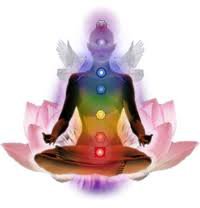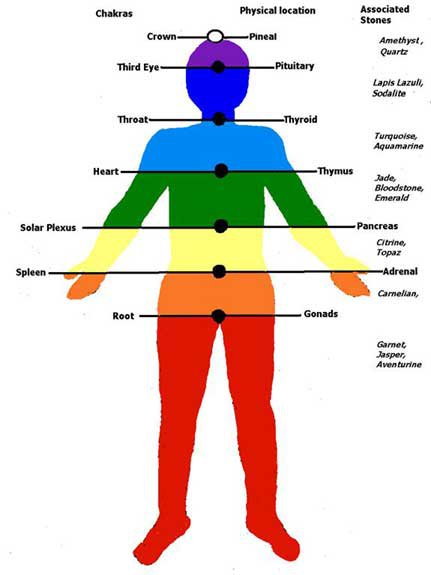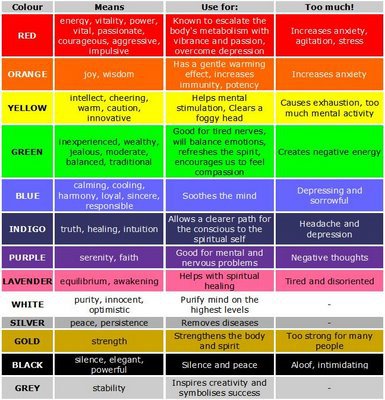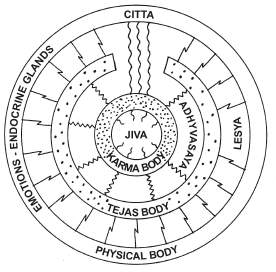psychic colours, spiritual mental colourisation
Leshyas are mental stages of transformation when the mind comes in contact with different substances, one’s mental state changes accordingly. On account of its association with various types of aggregates of atoms, the mind undergoes different transformation experiences and varied influences. They are called Leshya. Mental state assumes the colour of that type of substance in whose vicinity the mind happens to be.
[Internal view]:
Leshya is the agency, which transforms the imperceptible micro-vibrations of the primal drives into perceptible forces, which produce appropriate conditions in the neuro-endocrine system, thus acting as a liaison between the spiritual self and the physical self of a living organism.
In Jainism, there is a great deal of importance given to the doctrine of leshya. Leshya refers to the state of mind which is reflected in our activities and plays an important role in the bondage of karma and the release therefrom. According to Jain philosophy, the kind of vibrations produced by Karma Sharir, the karmic body, determines the nature of the feelings originating from it. The nature of feelings determines the radiation of the tejas (radiance) - atoms. The quality of radiation creates its own kind of environment, and the nature of the environment in turn determines our current of feeling and this current is called Leshya.
Leshya is also known as coloration of the soul. The 6 colorations of the soul are differentiated between Dharma Leshyas - auspicious colorations - and Adharma Leshyas - inauspicious colorations. Dharma Leshyas lie in the upper part of the body above the navel, Adharma Leshyas in the lower part below the navel.
Dharma Leshyas | Adharma Leshyas | ||
Tejo Leshya | Red | Krishna Leshya | Black |
Padma Leshya | Yellow | Neel Leshya | Blue |
Shukla Leshya | White | Kapot Lehsya | Grey |
The truths, which the Jain thinkers tried to expound in the light of the six colourations of the soul, have been expounded by the Hathayoga School of philosophers in the light of the cakras or plexuses and glands in the human body. Both the schools have framed their own definitions. There is no basic difference between these schools except in matters of definition. According to Hathayoga there are three cakras in the upper part of the body above the navel - anahata, ajna, sahasraraand - and three in the lower part below the navel - muladhara, svadhisthana and manipura cakras.
[External view]:
Aura - Abhamandala
Read:
- Transmutation Of Personality [37] The Aura
- Transmutation Of Personality [39] Foundation Of Mental Peace
- Transmutation Of Personality [41] Basis For The Classification Of Leshya
- Transmutation Of Personality [42] Identification Of The Aura And The Current Of Feeling
- Transmutation Of Personality [43] Taste, Smell And Touch Therapy
- The Mysteries Of Mind [06.2] The Upward Flow Of Energy (2)
- Preksa Dhyana - Theory And Practice [1.12] Basic Principles - Perception of Psychic Colours (Lesya-Dhyana)
- Lord Mahavira's Scripture Of Health [14.01] Perception of Psychic Colours and Health - Strange Question:Strange Answer [and following chapters]
Illustrations:



